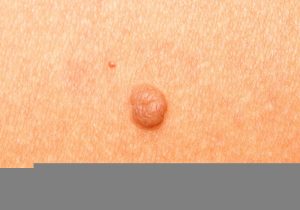
Moles are growths on the skin that are generally black or brown, and can appear anywhere on the skin. Moles usually appear in childhood and then during the first 30 years of life, and it is normal to have between 10 and 40 moles by adulthood.
As we age, moles can begin to change in color or become raised.
Several reasons exist for mole removal:
- ~Concern that the mole may be cancerous
~The mole has become problematic, as it may catch on clothing
~Cosmetic reasons
Cancer suspicion is not the only reason for the removal of moles. Some people just don’t like the way they look.
There are two main methods to remove moles: excision with cauterization and excision with stitches.
Contents
Excision with Cauterization
This procedure uses a local anesthetic to numb the area. A scalpel is used to shave a mole down to skin level, which will cause bleeding. To stop the bleed, the physician will use either an electrical device or a solution to stop the bleeding by cauterizing the area.
Excision with Stitches
This procedure generally involves a deeper cut than the previously described procedure. The surgeon will determine how much surrounding tissues must also be removed. Once the mole has been cut away, stitches are used to suture the wound closed.
If there is a cancer concern, the mole will be sent for lab tests to determine whether it is malignant.
There are other options for mole removal, which can be used if there are no suspicions of cancer.
Laser Mole Removal
Laser mole removal use laser therapy to essentially break up the mole. The light energy is targeted at the mole. The pigment in the mole absorbs the energy. This energy breaks up the pigment, which is then eliminated by the body.
Remove Moles with Cryotherapy
Cryotherapy or freezing to remove moles is especially beneficial for removing facial moles because there will be no visible scarring.
During the cryotherapy procedure, liquid nitrogen will be applied to the mole. The liquid nitrogen produces ice crystals in the cells, causing them to die. After the treatment, a blister will form, then the mole will dry out and fall off.
If you want to get rid of unsightly moles, consult with a knowledgeable physician to discuss your options.








